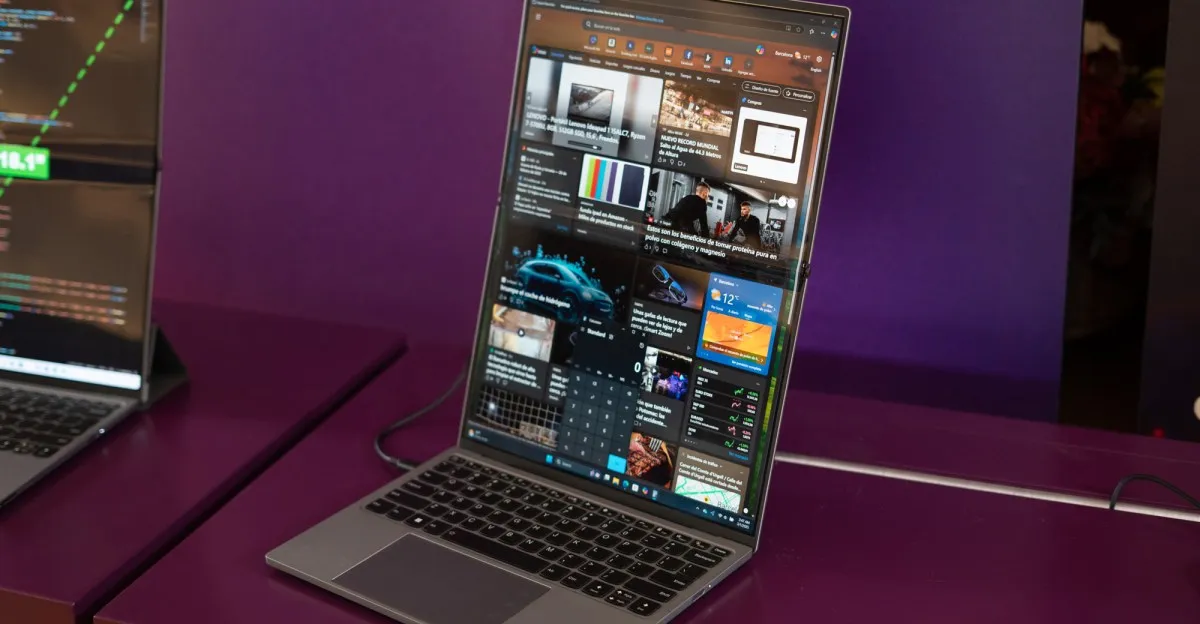
At the recently concluded Mobile World Congress, Lenovo introduced an exciting new product: the ThinkBook “codename Flip” AI PC Concept. This innovative device is designed specifically for productivity and business use, featuring a flexible display that allows it to transform seamlessly between various modes. Users can operate it as a traditional 13.1-inch clamshell laptop, a compact 12.9-inch tablet, or even an impressive 18.1-inch vertical screen.
The ThinkBook Flip utilizes the same high-quality OLED panel found in the premium $3,500 ThinkBook Plus Gen 6, which is set to launch in June. However, in the Flip, the screen is ingeniously designed to fold behind the main display rather than extending out from beneath. This unique setup eliminates the need for motors, potentially reducing production costs while maximizing screen usage. As a result, the Flip boasts an impressive 0.4 inches of additional screen real estate compared to its Gen 6 counterpart.
When in the traditional clamshell mode, the Flip operates like a standard 13-inch laptop, albeit with a significant portion of the screen facing backward. This rear-facing display can either mirror or extend the primary display, making it an ideal tool for presentations without the need for external monitors or projectors. Users can also choose to leave it blank for a more minimalist look. The true highlight, however, is when the screen is flipped up, unveiling a stunning 18.1-inch display with a resolution of 2000 x 2664, providing an immersive experience for viewing long documents or websites.
Beyond its remarkable display, the ThinkBook Flip features a Smart ForcePad trackpad, which offers three layers of color-coded LED-illuminated touch shortcuts and media controls. This innovative trackpad can transform into a number pad, provide quick access to essential functions like the Snipping Tool, or act as an app launcher. Samuel Shang, the principal researcher at Lenovo Research, shared that the company's ideal vision would be to replace the touchpad with a smartphone display, although this would significantly increase costs. The current illuminated icons present a practical compromise.
While the ThinkBook Flip remains in the concept phase, Lenovo has revealed some impressive estimated specifications for the device, suggesting a strong potential for market release. The laptop is expected to be powered by an Intel Ultra 7 processor, complemented by 32GB of LPDDR5X RAM and PCIe SSD storage. Additionally, it will feature Thunderbolt 4 ports and a fingerprint reader for enhanced security.
During a brief demonstration prior to MWC, the prototype of the ThinkBook Flip appeared somewhat fragile and unfinished compared to the more polished ThinkBook Plus Gen 6 seen at CES. However, another prototype showcased by my colleague Allison Johnson in Barcelona seemed to be more advanced and cohesive. While there is always a chance that this concept may remain a prototype, the fact that it shares components with the ThinkBook Plus Gen 6 increases its likelihood of reaching the market.
The ThinkBook Flip presents a compelling alternative in the laptop market, especially if its motor-free design translates to a lower price point compared to its rollable counterpart. As a fan of innovative laptops, I am eager to see a wider variety of unique offerings like this one. The potential for diverse configurations in the realm of business laptops could indeed pave the way for exciting advancements in productivity technology.